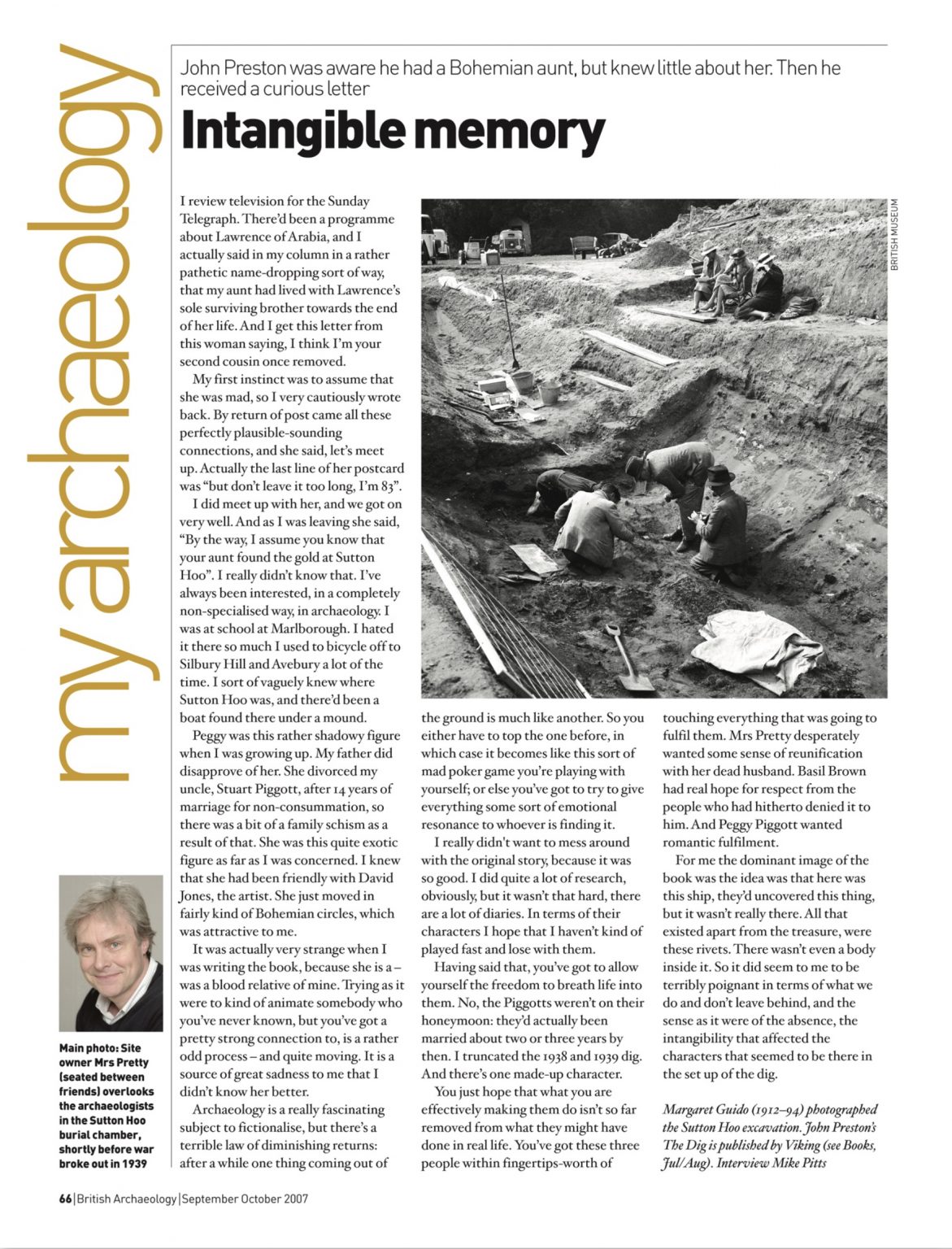Archaeology on Film
Our guest blog today comes from young CBA volunteer Zachary Adamson, BA (Hons) Archaeology, who takes a look at movie representations of archaeology, both good and…not so good…
With the release of ‘The Dig’, what better time to reflect on how movies have portrayed the practice of archaeology. From Anglo Saxon ship burials, temples of doom, and even Einstein–Rosen bridge portal devices (that’s wormholes to the uninitiated), truly, archaeology has no limits.
The Dig
John Preston’s 2007 novel The Dig is a well-received novel that covers the 1939 Sutton Hoo excavation of an Anglo-Saxon ship burial. And now, it’s on our screens, thanks to Netflix. Directed by Simon Stone (check out the new issue of British Archaeology magazine for an interview with Simon and behind the scenes insights), the film stars Carey Mulligan as Edith Pretty, the local landowner and hirer of Basil Brown, portrayed by Ralph Fiennes.
Brown was a self-taught archaeologist who led the Sutton Hoo excavation and subsequent discoveries. The author’s own aunt, archaeologist Margaret Piggot (better known as Margaret Guido), was also involved in the excavation. The movie sees a pleasant change in tone for a depiction of archaeology in cinema. In fact, unless my Professors failed to mention it, there has been no evidence of aliens, magical artifacts or long-lost remains of Christ found at Sutton Hoo; although I am sure it is only a matter of time...
The Dig is a beautifully shot, character-driven retelling of one of the most important episodes in British archaeological history. It has been favorably reviewed by critics and is a worthy recreation of the original text and the excavation itself. There are liberties taken with the way that certain characters, particularly those of Edith Pretty and Penny Piggot are portrayed (you can find short biographies of the real-life characters here). But, in terms of fantastical Hollywood depictions of archaeology, The Dig is by no means the worst culprit.
Editor: In a 2007 issue of British Archaeology Magazine, author of The Dig, John Preston wrote about his aunt, the real-life Margaret Guido (below).

Indiana Jones
So. The Indiana Jones movies. I shall of course be ignoring the fourth (and likely fifth) movie, as any self-respecting fan should. I see this trilogy of movies as the three biggest lies ever projected in cinema. How many fresh-faced Archaeologists showed up on their first dig expecting to be handed a whip and to be pointed to the nearest long-lost treasure, only to spend the next month pickaxing through a collapsed Roman wall?
For those that have lived ‘under a rock’ their whole life, these movies follow Dr. Henry Walton “Indiana” Jones, Jr, portrayed by the luckiest carpenter in the world, Harrison Ford. Generally, they follow Indy on his never-ending quest to destroy the entire archaeological record whilst acquiring some mystical ‘MacGuffin’, which he is usually hell-bent on getting into an American museum. Something that certainly would not float in today's climate. Although hardly a realistic representation of archaeology, these movies have nevertheless ensured a steady supply of students for the subject since their release.
A Month in the Country (1987)
A Month in the Country is a surprisingly hard-hitting film following Tom Birkin, a WW1 veteran, who has been employed to uncover a medieval mural in the local church of a truly idyllic Yorkshire village. Although his efforts may make actual conservationists wince, to the untrained eye it is a pleasantly refreshing and accurate portrayal of archaeological practice.
Furthermore, Birkin is portrayed by everyone’s favourite Mr Darcy, and is worth a watch even if just for how unrecognisably young Colin Firth is in this movie. The story itself comes from a book of the same title, with author J.L. Carr said to have based it on his own life. The archaeology shown in the movie is refreshingly realistic.
SPOILER: only one item that could be classed as treasure is uncovered and there is not a single legendary or mystical artefact to be found. If only I had watched it before I did my degree.
Stargate (1994)
Archaeology goes ‘off planet’ in Stargate, released in 1994. This movie somehow started an entire franchise and even featured an Archaeologist going to space through a wormhole. Its use of the classic combination of the military, aliens and an academic apparently worked in its favour. If only the same could be said for Indiana Jones and the Kingdom of the Crystal Skull.
The movie stars Egyptologist and linguist Daniel Jackson, portrayed by James Spader. Daniel is a man who has clearly been watching far too much of the History Channel, and when he isn’t hunting for Bigfoot, he likes to preach about how aliens built the pyramids. Unfortunately for Daniel and certainly many other people with too much time on their hands, just because westerners didn’t manage to build any pyramids, it doesn’t mean it was aliens.
The movie doesn’t see it this way, and soon enough we meet the extra-terrestrials that took time out of their busy schedules to knock up one of the seven wonders of the ancient world. Aliens and pseudoarchaeology aside, Spader’s character could actually pass as an Archaeologist, which on reflection, is unfortunate for all involved in the profession.
Join the Council for British Archaeology today and begin your own archaeology story!
